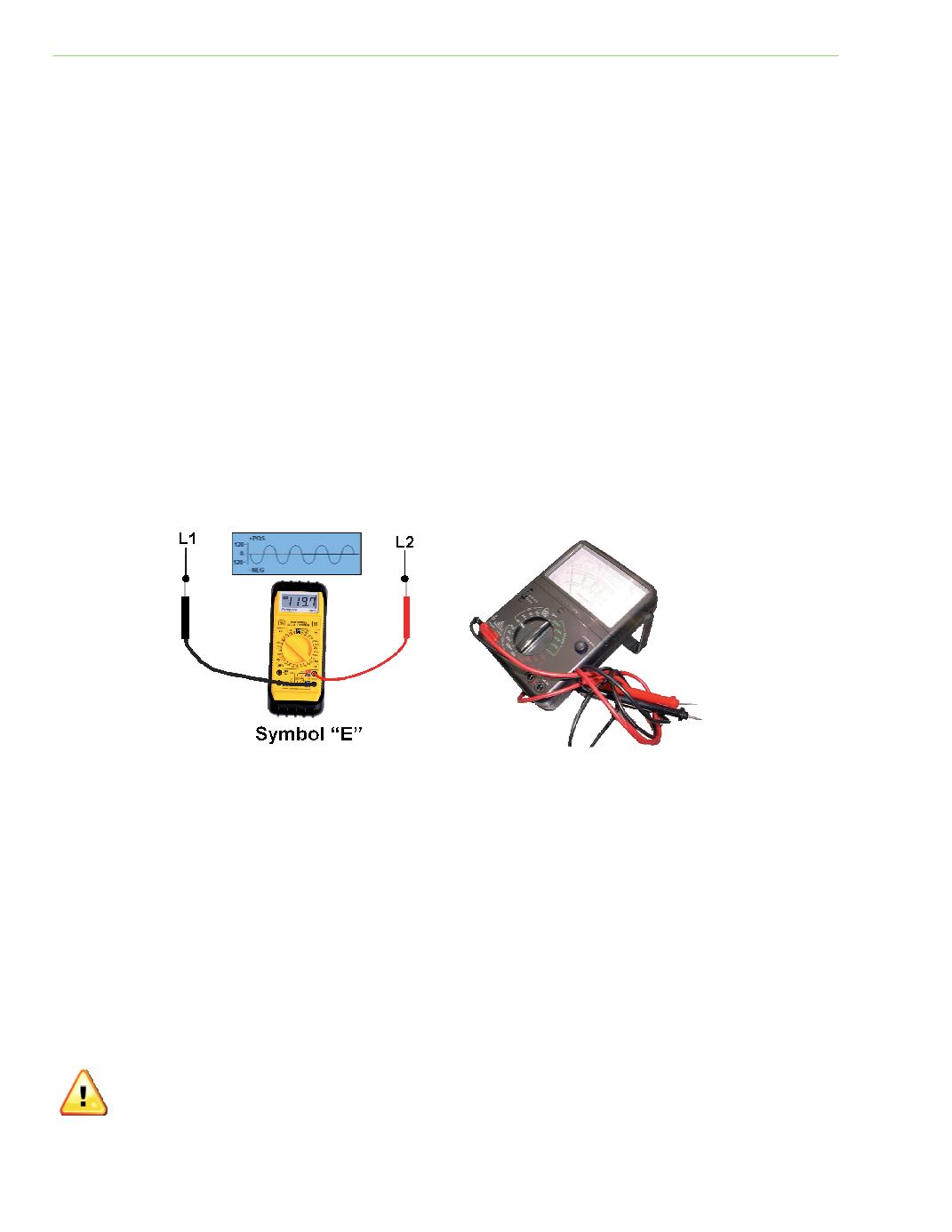

Page 4
Chapter 1: What Is Electricity?
Electrical Theory & Applications for HVACR
Some typical voltages include: 1.5 Volts for a flashlight cell, 12 Volts for auto baƩeries, 24 Volts for
controls, 120 Volts for homes, and 240 Volts for commercial systems. Voltage can vary from a
microvolt (millionths of a Volt) to megavolts (millions of Volts).
The terms potenƟal, electromoƟve force (EMF), and voltage mean the same thing and can be used
interchangeably. Most people refer to EMF as Volts. Remember, electromoƟve force is NOT
electricity. It is the driving force that causes electrons to move from one atom to another.
MEASURING VOLTS
Voltmeters are used to measure the potenƟal difference between two specific points and are
available in analog or digital types. Digital meters are much easier to read because they display the
voltage directly while analog meters move a pointer across a scale in proporƟon to the voltage of the
circuit and can be easily misread.
All voltage testers, regardless of type, have two probes and the meter indicates potenƟal difference
between the two probes. Voltmeters are oŌen used to check electrical power supply. Correct
placement of the probes and interpretaƟon of the readings is criƟcal for proper troubleshooƟng of
electrical problems.
Electrical appliances are energy‐consuming and conversion devices (called loads) and they are
designed for connecƟon between a potenƟal difference. A specific voltage must be applied to force
electron movement through the device. When tesƟng supply voltage, a maximum variaƟon of plus or
minus five percent is generally acceptable. ConnecƟng wires supply the necessary electrons and
complete the circuit or pathway for electron flow. When the proper voltage is connected to a load,
the load should operate. If the device is supplied the proper voltage and does not operate, it is
defecƟve. A voltage tester can quickly reveal this problem.
A voltage tester reads zero when no potenƟal difference exists between the two probes, but will also
read zero if voltage and polarity are the same at both probe locaƟons. AddiƟonal voltage tests are
required to determine whether or not voltage is present.
Never touch an electrical wire because a zero voltage reading was obtained – you may be
reading the same potenƟal (no difference) between the probes!
Fig. 1‐1 (a): Digital Voltmeter
Fig. 1‐1 (b): Analog Voltmeter










